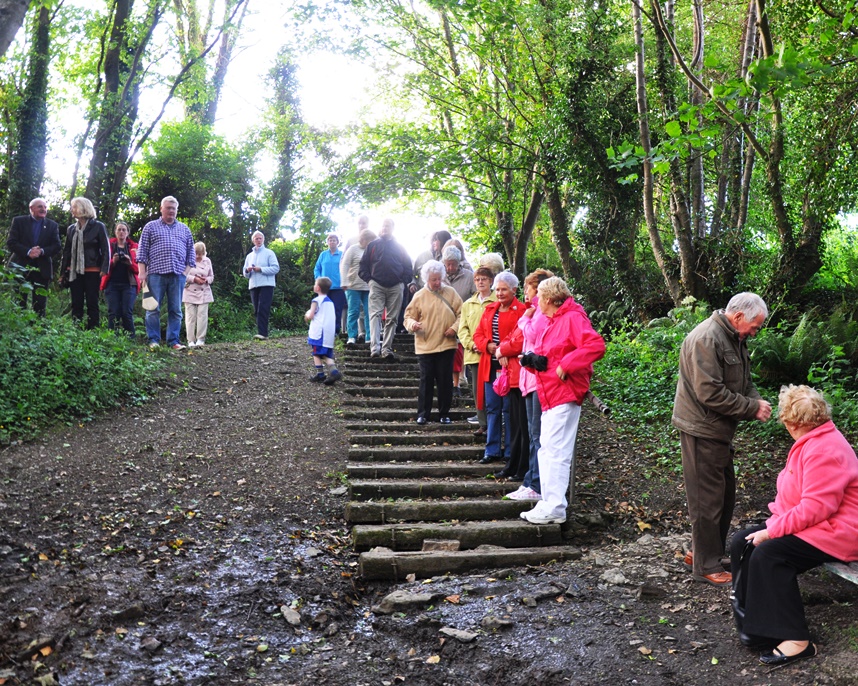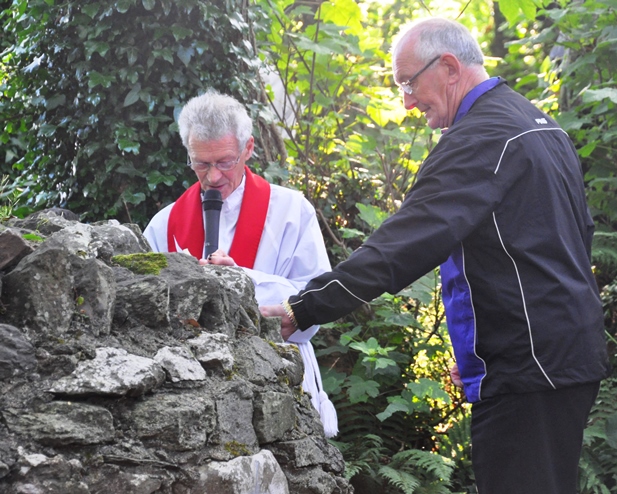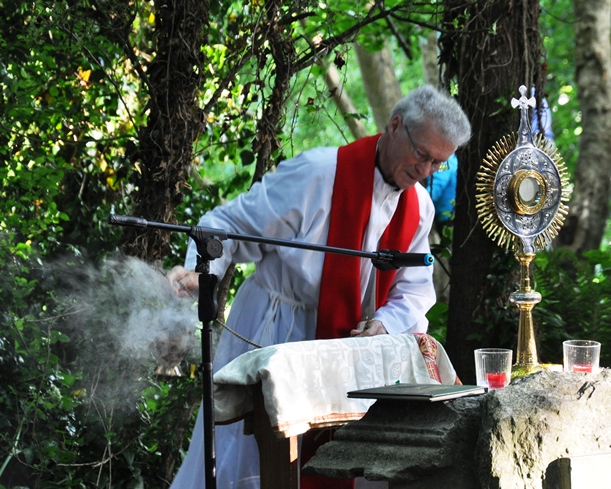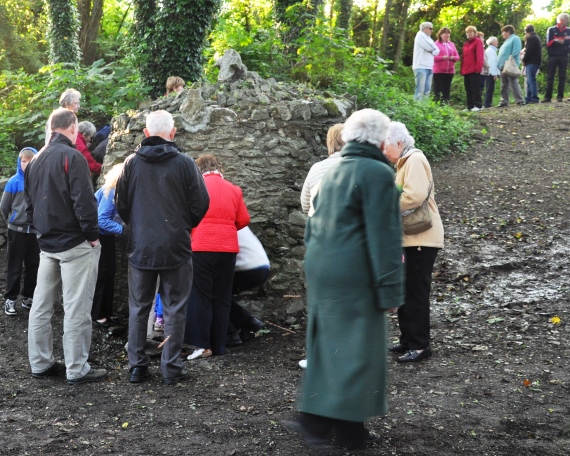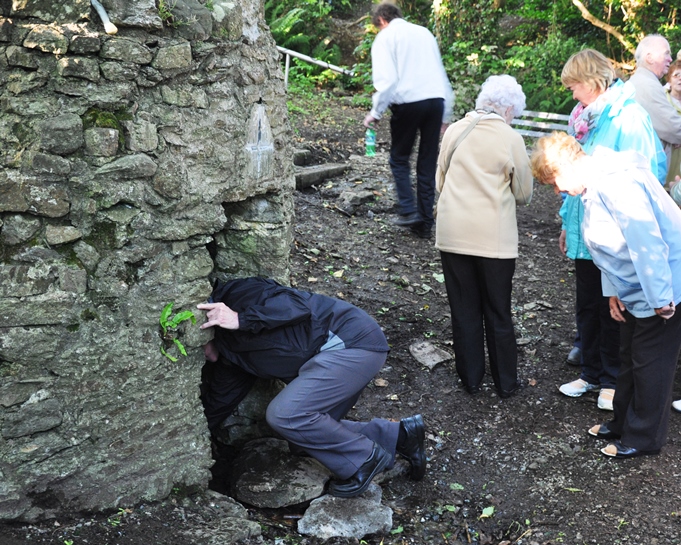St John’s Well Carrigaline
St John’s Well Carrigaline is venerated on St John’s Eve (23rd June) in a tradition that dates as far back as at least the early nineteenth century. The communal celebration of the well sees over a hundred locals gather for prayer and hymns at the site.
The well, also referred to as Tobar Eoin Óg or St Renogue (in a corrupted form), is located to the north-west of the main town, along a path between the Ballinrea Road and the Ballea Road (R613), adjacent to the Dun Eoin residential area. It is encased by a bee-hive shaped structure, with a small entrance from which water flows. A damaged cross tops the structure, while five pilgrim crosses are inscribed on the exterior walls. While a number of locals are very dedicated to the upkeep of the site, anti-social activities (a common feature of wells and other sites near towns) still make their presence felt.
St John’s Eve is a traditional time of celebration. It is a mixture of the Summer Solstice, Pagan/Celtic customs and Christian/Catholic saintly devotion. The lighting of bonfires (large open air fires) was a prominent way of marking the occasion; this practice is still common in Cork city with both official community events and unofficial (sometimes dangerous) fires. As part of the customs surrounding the night, wells and sites associated with St John are venerated.
The current form of the devotions at St John’s Well are organised by a small group in conjunction with the Catholic parish clergy. The rosary is lead by a priest who circles the well, with someone inscribing crosses to mark each decade of the rosary. The Eucharist or Blessed Sacrament is displayed and venerated, while music is provided by members of the parish choir and the Carrigaline Pipe Band. After the formal service, some go to the well to drink the water, bless themselves and/or collect some to take way.
While the format of the events see only one or two people doing the ’rounds’ during the service, a number of people individually circle the well, marking the crosses and praying. The structure over the well forces pilgrims to bend down and really get into the well if they are to access the water. The bodies and movements of the pilgrims, therefore, respond to the spaces in a particular way. Also, while a minority are content to bless themselves with the water as it flows from the well, many gather it from the well directly. This speaks to a firm continuation of faith in collecting, touching and drinking the water at the exact point of the source, where it is held to be purest.
The organisation of and attendance at the 2013 service indicated a healthy belief in the well and the importance of continuing its veneration in this community. This is the third year in-a-row that I have attended this event and it has consistently attracted large crowds (although torrential rain last year resulted in a simplified service and a smaller crowd). Also, on this visit I meet Louise Nugent of the blog Pilgrimage in Medieval Ireland who has also written a post on the evening.
Locating the well:
Further reading and sources:
Carrigaline Catholic Parish website features information on the Well.
CO086-056 (Archaeological Survey of Ireland, Record Details) on http://www.archaeology.ie. Posted: 14 Jan 2009
St John’s Eve article from Irish Culture & Customs .com
St John’s Eve post from A Silver Voice from Ireland blog
